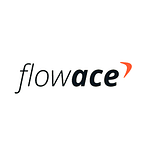Making Employee Reviews Easier with Monitoring Software
Employee appraisals are a critical component of organizational success, providing valuable feedback and driving performance improvements. However, traditional appraisal processes can be cumbersome, subjective, and time-consuming. For companies leveraging employee monitoring software, appraisals become more streamlined, objective, and effective. Here’s how employee monitoring software simplifies the appraisal process and enhances overall performance management.
1. Objective Performance Data
One of the most significant advantages of using employee monitoring software is the availability of objective performance data. Instead of relying on subjective observations or sporadic feedback, managers can access comprehensive data on employee productivity, task completion, and work habits. This data provides a clear, factual basis for performance evaluations, reducing bias and ensuring that appraisals are grounded in measurable outcomes.
2. Real-Time Performance Tracking
Employee monitoring software offers real-time insights into employee performance. Managers can track progress on projects, monitor time spent on various tasks, and assess overall productivity. This continuous visibility allows for timely feedback and adjustments, making it easier to address performance issues as they arise rather than waiting for scheduled appraisal periods.
3. Detailed Performance Metrics
The software provides a range of performance metrics, such as task completion rates, project milestones, and time management. These metrics help managers evaluate individual and team performance comprehensively. With access to detailed reports and analytics, managers can identify patterns, strengths, and areas for improvement, leading to more informed and accurate appraisals.
4. Enhanced Goal Setting
Employee monitoring software facilitates clear goal setting by tracking progress towards specific objectives. Managers can set measurable goals, monitor progress in real-time, and adjust targets as needed. This alignment between goals and performance data ensures that appraisals are based on well-defined, achievable objectives, leading to more meaningful and relevant evaluations.
5. Improved Feedback Mechanisms
Regular feedback is essential for employee development. Monitoring software enables managers to provide ongoing feedback rather than waiting for annual reviews. Employees receive timely insights into their performance, allowing them to make improvements and stay aligned with organizational expectations. This continuous feedback loop fosters a culture of constant growth and development.
6. Simplified Documentation
Documentation is a crucial aspect of the appraisal process, ensuring that performance evaluations are recorded and can be referenced later. Employee monitoring software automatically generates reports and logs performance data, simplifying the documentation process. This streamlined approach ensures that records are accurate, up-to-date, and easily accessible during appraisal meetings.
7. Facilitating Data-Driven Decisions
Data-driven decision-making is a key benefit of using employee monitoring software. Managers can analyze performance trends, compare data across different periods, and make evidence-based decisions during appraisals. This approach enhances the fairness and accuracy of performance evaluations, leading to more effective management strategies.
8. Identifying Training Needs
Employee monitoring software helps identify areas where employees may need additional training or support. By analyzing performance data, managers can pinpoint skill gaps and recommend targeted training programs. This proactive approach ensures that employees receive the resources they need to improve their performance and achieve their goals.
9. Enhancing Employee Engagement
When employees understand how their performance is measured and receive regular feedback, they are more engaged and motivated. Monitoring software provides transparency into performance expectations and progress, fostering a sense of accountability and ownership. Engaged employees are more likely to perform well and contribute positively to the organization.
10. Streamlining Appraisal Administration
The administrative aspects of the appraisal process, such as scheduling meetings, collecting feedback, and preparing reports, can be time-consuming. Employee monitoring software automates many of these tasks, reducing administrative burdens and allowing managers to focus on meaningful interactions with employees.
Conclusion
Employee productivity monitoring software transforms the appraisal process by providing objective performance data, real-time insights, and detailed metrics. By facilitating goal setting, improving feedback mechanisms, and simplifying documentation, this technology enhances the effectiveness of performance evaluations. With data-driven decision-making and streamlined administration, companies can conduct more accurate, fair, and productive appraisals, ultimately driving better employee performance and organizational success.
